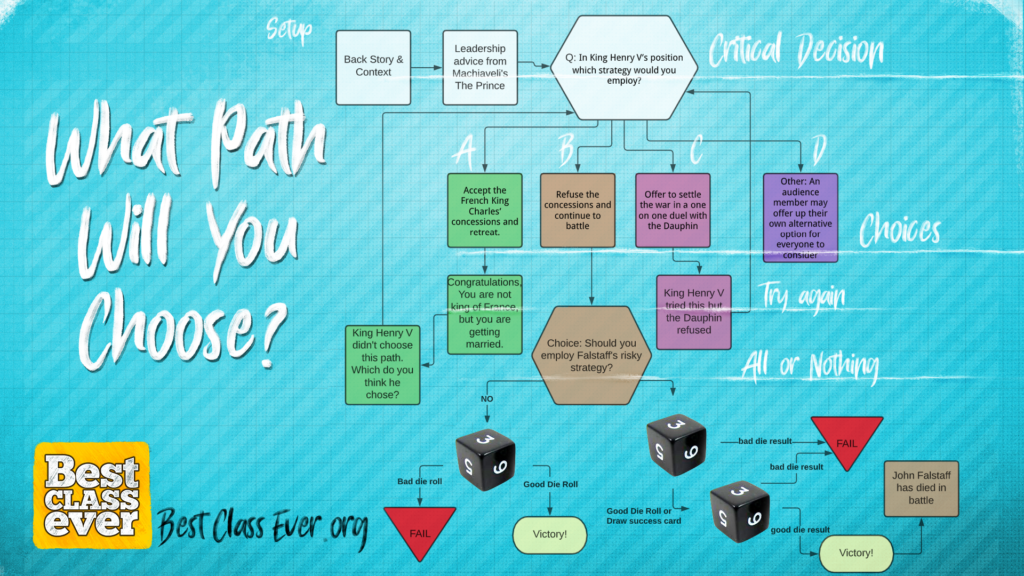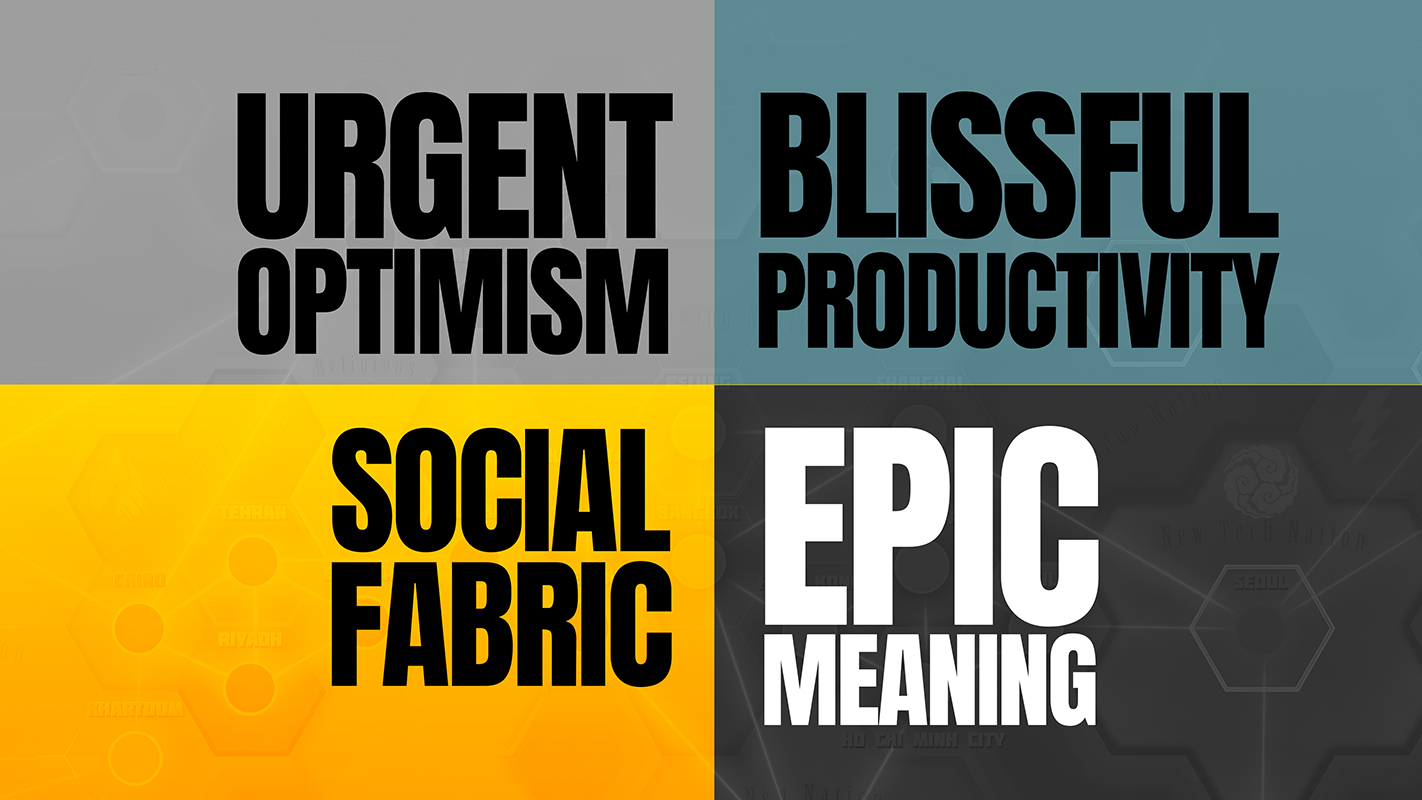Transcript:
Developing games is fun but it takes a long time and a lot of work. But recently I found an easy way to take any great story from history or literature and make it into a simple game. My name is Shaun McMillan, and this is the Best Class Ever.
[intro music]
Professional Game Design
For those of you who don’t know, I have designed multiple educational games. I created ALLIANCE the Ultimate World Leader Political Science Megagame. It’s like Monopoly, Risk, and Settlers of Catan all rolled up into one massive board game for 72 players. We split them into 3 man teams and allow them to lead 20 different nations. Through a combination of war game mechanics, the trade of poker chips which represent each nation’s various assets, and negotiation, these 72 world leaders must resolve all of the world’s problems within 4 hours. Then at the end they either all win together by achieving world peace, or they all lose and it ends like a Shakesperian tragedy.
I also took my church’s famous Bible Study and turned it into a card game called, Great Boy the Game. I also have a small card game called Conspiracy for 2-9 players which feels like Game of Thrones, and another small card game for 2-5 players called ALLIANCE Trade Wars, which simulates the problem of tackling the climate change crisis.
To see what these games look like I have them available on www.BestClassEver.org.
The Power of Learning Through Play
Now after all of this shameless self-promotion you must be wondering, what is this, just some way for Shaun to plug his games? Well, yes, but I bring this up because in the world of education we call this learning through play or game based learning. The idea is that learning through simulations is the single most fun and effective way for students to learn. There are a few reasons for this, and I think you’ll agree that
- Children obviously learn through play.
- Students learn more broadly, more deeply, and more quickly when they are allowed to experiment without being penalized for making mistakes. In other words, when they are allowed to play. And lastly,
- Knowledge taught in the classroom transfers to real world practice much better when the situation in the classroom more closely simulates the situation in real life. That’s why it is generally better to use simulations, or games that simulate realistic scenarios.
Jane McGonigal once gave a TED talk and she gave four key reasons why PEOPLE LOVE GAMES. She said that we love games because
- Games provide urgent optimism meaning they give us work that is both challenging and time sensitive, but they never give us a goal that is impossible.
- Games make us feel blissfully productive, which is ironic because parents see their children playing games and think wow, what a waste of time. But it never feels like you are wasting time when you actually play the game. If nothing else at least a game is teaching how to optimize, focus, and be effective.
- Games provide social fabric by giving us an important role to play within a group of peers
- Games provide epic meaning. In a game you are told that you and you alone can save the world.
So the obvious question here is, why can’t school, learning, and life feel more like a game?
School is a Terrible Game
Well actually school is a game. It just isn’t a very fun game. You have levels that you progress through, but you only get to level up once at the end of each year. You have end level bosses in the form of exams which are pass or fail. You have a point system, but instead of being awarded points by starting at 0 and gaining points like you do in most games, in school you instead start with 100 points and you are punished by taking away points for every single mistake you make. You have a leaderboard in the form of class rank. You even have guilds and tribes in the form of cliques and popularity contests.
This is why as a teacher, I tried to teach my classroom lessons through games whenever possible. But to be perfectly honest, it is really hard to design a game, and even harder to teach a specific lesson. It took me 3 months to design the first version of ALLIANCE and three years to perfect it. And I’m a professional designer.
Scenario Based Learning
So how can we turn a lesson into a game more quickly and easily? Well I did find at least one way. In last week’s lesson we took a famous story from Shakespeare and turned it into a leadership simulation. But at the heart of it is really just one simple multiple choice question.
I gave the situation, explaining how King Henry got into his situation. Then I forced you to make a difficult choice by providing 3 different options.
The key is to make the choice really difficult by providing 3 equally valid options. Remember, every student is a professional multiple choice test taker. So you really have to design the scenario well to make it interesting.
If you remember we provided 3 options. One was valid because it was the safest option but it wasn’t the most appealing because it was an unhappy compromise. The second and third options were both high risk high reward options, but for different reasons. The second option put King Henry’s personal life at risk, and the third option put his entire army at risk.
Simulating Uncertainty with Dice
We then used dice to simulate the risk and uncertainty. You simply have to decide what the odds are and then roll. You can roll two dice if you want a weighted dice roll. This is getting a little mathematical, but one dice is truly random. Two dice means you are more likely to get a mid-range result, because there are multiple ways to roll an 8 with two six-sided dice, but only one way to roll a 2 and only one way to roll a 12, the lowest and highest results.
Transforming a Story into a Game
Every great story either from literature or from history can be turned into a scenario based game in this way. You simply have to go to the midpoint crisis in the story, or to the climax. The point at which the protagonist has to make the most difficult choice.
Provide context to your audience, present their options, and make sure each option seems valid but for different reasons. Once they make their choice simply let them know what the results are.
It’s also exciting because they’ll get to see how their own choice compares to the protagonist’s choice in the original story.
Real Time Feedback
This form of teaching also provides real time feedback. It gives you the chance to see if the students really understand what you’re teaching them. Instead of just talking at them as you would in a typical classroom, you can get them fully engaged in the lesson.
Further Resources
To see a more detailed instruction guide on how to create a choose your own adventure scenario based lesson, or to see ALLIANCE the ultimate world leader political science megagame, simply visit www.BestClassEver.org.



